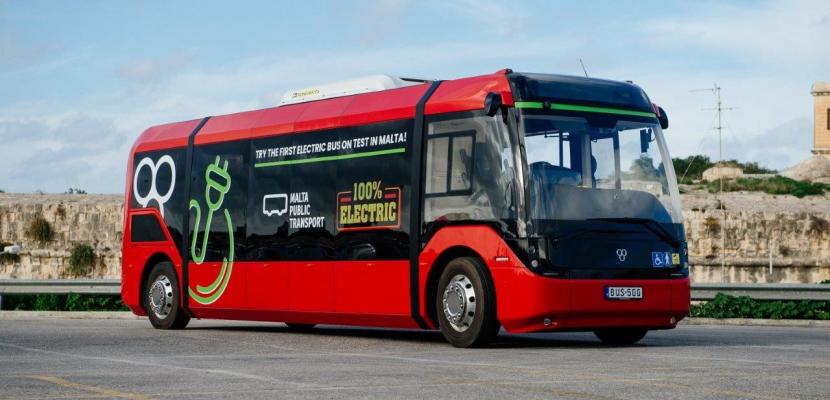Image

Pre-testing of e-bus as a training for drivers and technical staff prior to the launch of pilot
Published on 12 August 2021

Malta
This is the good practice's implementation level. It can be national, regional or local.
About this good practice
This was the first time that an electric bus was tested in the Maltese islands. The driving technique, operational characteristics and the problem-solving techniques of electric buses were still new to the transport operator staff. The pre-testing served as training for the staff to familiarise themselves to electric buses.
Part of the training for drivers who were going to drive the electric bus during the TAM electric bus pilot project involved driving the bus on a test route to get familiar with the bus before boarding any passengers. This can be considered as a Good Practice with regards to Health & Safety. Following the pre-testing, it was easier to identify the performance of the bus in certain uphill roads which were more challenging. This helped in choosing the routes that the electric bus would be operated on. The pre-testing also helped the technical staff to identify any common issues encountered during the pre-testing phase. In case of any technical failures the supplier of the bus was available to assist the technicians to resolve these errors. In case of damaged components, the supplier provided the necessary spare parts and guided the technicians on how they should be replaced.
The pre-testing served as training on electric buses for the drivers and technical staff. It also served to determine the ability of the bus to perform well in certain roads, before operating on that road with passengers.
Part of the training for drivers who were going to drive the electric bus during the TAM electric bus pilot project involved driving the bus on a test route to get familiar with the bus before boarding any passengers. This can be considered as a Good Practice with regards to Health & Safety. Following the pre-testing, it was easier to identify the performance of the bus in certain uphill roads which were more challenging. This helped in choosing the routes that the electric bus would be operated on. The pre-testing also helped the technical staff to identify any common issues encountered during the pre-testing phase. In case of any technical failures the supplier of the bus was available to assist the technicians to resolve these errors. In case of damaged components, the supplier provided the necessary spare parts and guided the technicians on how they should be replaced.
The pre-testing served as training on electric buses for the drivers and technical staff. It also served to determine the ability of the bus to perform well in certain roads, before operating on that road with passengers.
Resources needed
The pretesting involved the drivers that drove the electric bus as well as the technical staff who worked to solve any technical issues of the electric bus. The operations staff had to analyse the performance of the bus in the pre-testing phase.
Evidence of success
The pre-testing helped the transport operator staff to familiarise themselves with the operation of the electric bus. It served as training for drivers and technicians as well as an indicator of the ability of the bus to perform well in certain local roads (mainly uphills). The pre-testing phase reduced the passenger discomfort related to the driving techniques of the bus, since no passengers boarded the bus during the pre-testing phase.
Potential for learning or transfer
This good practice may be useful for other countries which still have not tested an electric bus. The pre-testing will help to identify the main challenges of the local conditions as well as to get familiarised with the operation characteristics of electric buses.
Further information
Website
Good practice owner
You can contact the good practice owner below for more detailed information.
Organisation
Malta Public Transport

Malta
Malta
Contact
Principal Scientific Officer